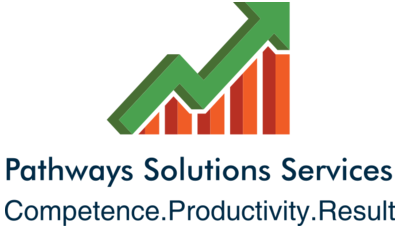As the world becomes more competitive, companies must strive to stay ahead of their competition. They need to be innovative, efficient, and effective. A key factor that can help them achieve this is investing in leadership and management development.
In this article, we will explore how leadership and management development can increase business growth. We will discuss the benefits of investing in these areas, the different approaches that can be taken, and how to measure the success of such programs.
Introduction
Leadership and management development programs are designed to help individuals become better leaders and managers. They can be offered through a variety of formats, including workshops, online courses, coaching, mentoring, and more. The purpose of these programs is to improve skills, knowledge, and abilities related to leading and managing others.
Benefits of Leadership and Management Development
Investing in leadership and management development can bring numerous benefits to a business. Here are some of the most significant ones:
Improved Performance
Leadership and management development can help employees become better at their jobs. They can learn how to motivate and inspire their teams, communicate more effectively, make better decisions, and manage conflicts more successfully. As a result, they can perform better, and the whole organization can benefit from increased productivity, efficiency, and effectiveness.
Increased Innovation
Leadership and management development can help employees become more creative and innovative. They can learn how to think outside the box, challenge the status quo, and come up with new ideas. This can lead to improved products and services, new markets, and increased competitiveness.
Better Employee Retention
Leadership and management development can help employees feel more valued and engaged. They can see that their employer is investing in their development and wants to help them grow. This can increase their loyalty and commitment to the organization, reducing turnover rates and improving employee retention.
Improved Reputation
Leadership and management development can help a business improve its reputation. Employees who are well-trained, motivated, and engaged can deliver better customer service, which can lead to more positive reviews, referrals, and word-of-mouth recommendations.
Approaches to Leadership and Management Development
There are several approaches that can be taken to leadership and management development. Here are some of the most common ones:
Coaching and Mentoring
Coaching and mentoring involve working with a more experienced person who can provide guidance, feedback, and support. This can be done in one-on-one or group settings, and can be tailored to the specific needs of the individual.
Workshops and Training
Workshops and training sessions can be held to teach specific skills, such as communication, conflict resolution, decision-making, and more. These sessions can be delivered in-person or online, and can be customized to the needs of the organization.
On-the-Job Experience
On-the-job experience can be an effective way to develop leadership and management skills. Employees can be given opportunities to take on more responsibility, lead teams, and work on projects that stretch their abilities.
Measuring Success
To measure the success of leadership and management development programs, it is important to establish clear goals and objectives. Some metrics that can be used to evaluate the effectiveness of these programs include:
Employee Engagement and Satisfaction
Employee engagement and satisfaction can be measured through surveys, focus groups, and other feedback mechanisms. This can help determine how employees feel about their jobs, their managers, and the organization as a whole.
Performance Metrics
Performance metrics can be used to track improvements in productivity, efficiency, and effectiveness. This can include measures such as sales, customer satisfaction, quality, and more.
Employee Retention
Employee retention rates can be used to evaluate the effectiveness of leadership and management development programs. If employees feel valued and engaged, they are more likely to stay
Implementation and Best Practices
When implementing leadership and management development programs, there are some best practices to keep in mind. Here are a few:
Start with Clear Objectives
Before starting any program, it is important to define clear objectives. What are the goals of the program? What outcomes are you hoping to achieve? Having clear objectives will help guide the design and implementation of the program.
Tailor Programs to Individual Needs
Different employees will have different needs when it comes to leadership and management development. It is important to design programs that are tailored to individual needs, rather than taking a one-size-fits-all approach.
Provide Ongoing Support
Leadership and management development is an ongoing process, not a one-time event. It is important to provide ongoing support to employees as they develop their skills and knowledge. This can include coaching, mentoring, and additional training as needed.
Measure Results
Measuring the results of leadership and management development programs is critical to understanding their effectiveness. It is important to establish clear metrics and to track progress over time.
Conclusion
Leadership and management development can be a powerful tool for business growth. By investing in the skills, knowledge, and abilities of employees, companies can improve performance, increase innovation, and build a more engaged and loyal workforce. Implementing effective leadership and management development programs requires clear objectives, tailored approaches, ongoing support, and measurable results.
FAQs
- What is the difference between leadership and management?
- Leadership is the ability to inspire and guide others towards a common goal, while management is the ability to plan, organize, and control resources to achieve specific objectives.
- Why is leadership and management development important?
- Leadership and management development is important because it can help employees become better leaders and managers, leading to improved performance, increased innovation, better employee retention, and a better reputation for the business.
- How can leadership and management development be implemented in a company?
- Leadership and management development can be implemented through coaching and mentoring, workshops and training, and on-the-job experience.
- What are some best practices for implementing leadership and management development programs?
- Some best practices include starting with clear objectives, tailoring programs to individual needs, providing ongoing support, and measuring results.
- How can the success of leadership and management development programs be measured?
- The success of these programs can be measured through employee engagement and satisfaction, performance metrics, and employee retention rates.

